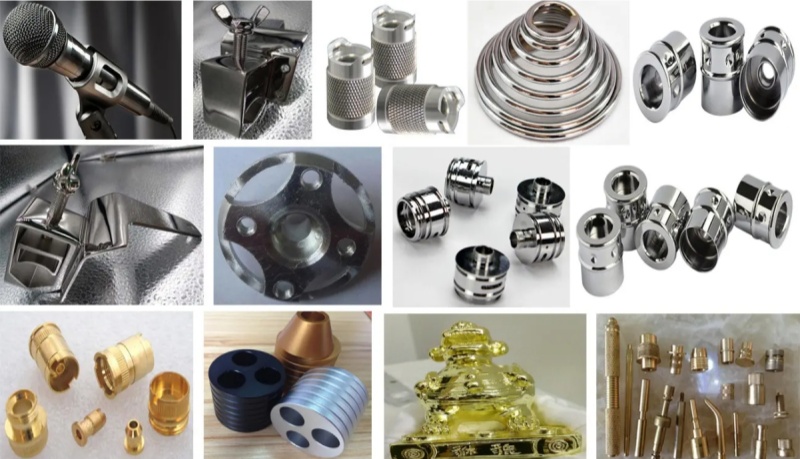Principles of Electroplating Processes
The electroplating process is based on Faraday's Law of Electrolysis, which states that in an electrolytic cell, metal ions from the anode (the plated metal) are dissolved into the plating solution, which is subsequently reduced and deposited as a metal film on the cathode (the part to be plated).
Types of Electroplating Processes
Decorative plating: such as gold plating, silver plating, mainly used to enhance the appearance and decorative properties of products.
Protective plating: such as zinc plating, nickel plating, mainly used to improve the corrosion resistance of products.
Functional plating: such as tin plating, cadmium plating, used to improve the conductivity or other special functions.
Process flow of plating
Pre-treatment: Remove oil, rust, etc. on the surface of the parts to be plated to enhance the adhesion of the plated layer.
Activation: The surface is treated with an acidic solution to form an activated film.
Electroplating: The parts to be plated are used as the cathode and the plated metal is used as the anode, and the metal ions are reduced and deposited on the surface of the parts to be plated through the electric current.
Post-treatment: Including cleaning, passivation, sealing, etc., in order to improve the protective performance and decorative effect of the plated layer.
Importance of plating processing
Plating processing can not only significantly improve the performance of materials, but also enhance the market competitiveness of products. For example, in the automotive industry, plating can prevent metal parts from rusting and prolong their service life; in the electronics industry, plating layer can provide good conductivity to ensure the normal operation of the circuit.
With the development of science and technology and the improvement of environmental protection consciousness, the electroplating process is moving towards a more environmentally friendly and efficient direction. New plating technologies, such as cyanide-free plating and trivalent chromium plating, are gradually replacing traditional processes to reduce the impact on the environment. In the future, electroplating processes will continue to play a key role in material protection and product innovation.

Post time:Sep-25-2020
